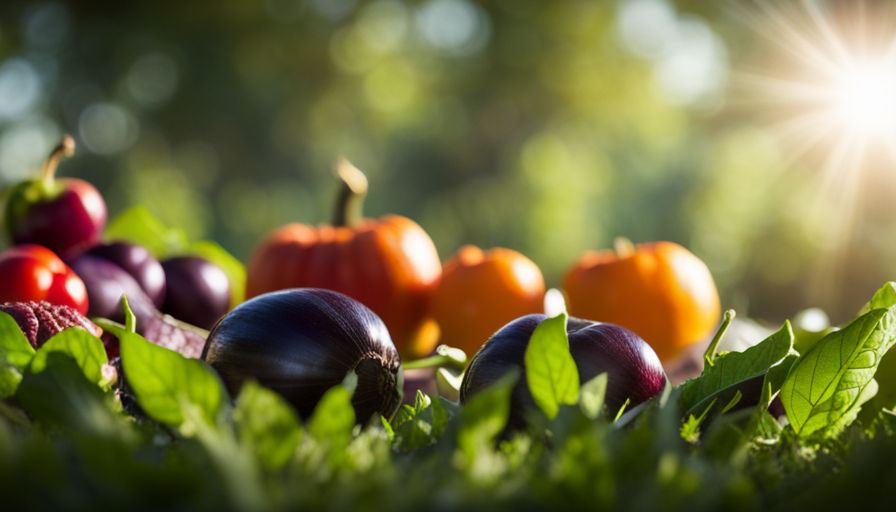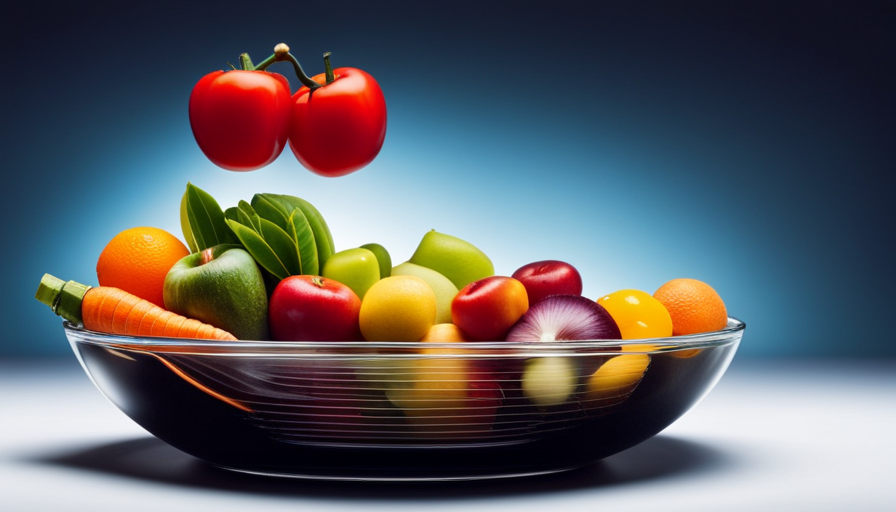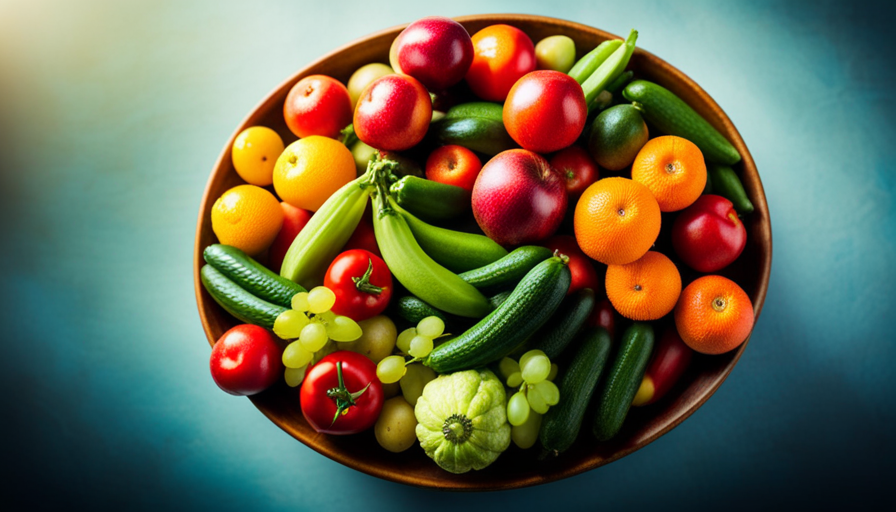When storing raw food in a cooler, the way you pack it can significantly impact its freshness and safety.
Picture this: you’re on a camping trip, surrounded by nature’s beauty, and the aroma of a sizzling BBQ fills the air. But wait, have you packed your cooler correctly? The last thing you want is to ruin the experience by risking foodborne illnesses. That’s why it’s crucial to understand the importance of proper food storage.
In this article, I will guide you through the precise order in which raw food should be stored in a cooler, following expert guidelines and best practices. From preparing the cooler to strategically placing ice packs and organizing raw meats, seafood, fruits, vegetables, and condiments, we will cover it all.
Get ready to master the art of cooler organization and ensure that your food stays fresh, safe, and delicious during your outdoor adventures!
Key Takeaways
- Storing raw food in the correct order minimizes contamination and spoilage risk.
- Separate containers should be used for raw meat, poultry, and seafood.
- Raw seafood should be kept separate from other raw foods.
- Store fruits and vegetables separately to maintain freshness and prevent contamination.
Understanding the Importance of Proper Food Storage
Understanding the importance of proper food storage is crucial in order to maintain the freshness and quality of raw food items. Proper storage techniques for leftovers play a significant role in preventing foodborne illnesses and ensuring that the food remains safe to consume.
When it comes to raw food, it’s essential to follow specific guidelines to minimize the risk of contamination and spoilage. Improper food storage can have a severe impact on foodborne illnesses. Bacteria, such as Salmonella and E. coli, can multiply rapidly in foods that aren’t stored correctly. These bacteria can cause symptoms like nausea, vomiting, diarrhea, and even more severe complications in some cases. By storing raw food properly, you can significantly reduce the chances of these harmful bacteria proliferating and causing illness.
To start with preparing the cooler, it’s essential to clean it thoroughly before use. Wash the cooler with warm, soapy water, and rinse it well to remove any dirt or residue. Next, sanitize the cooler by using a mixture of one tablespoon of bleach to one gallon of water. Allow the cooler to air dry completely before adding any food items.
By following these steps, you can ensure that your cooler is ready to store raw food safely.
Start with Preparing the Cooler
To begin preparing your cooler, first make sure it’s clean and free of any residue. This step is crucial to ensure that your raw food stays fresh and safe during storage. Use a mild detergent and warm water to clean the cooler thoroughly, paying special attention to corners and crevices where bacteria can hide. Rinse it well and let it air dry completely before proceeding.
Once the cooler is clean, it’s time to consider how you’ll organize your raw food for optimal storage. Start by separating different types of raw food into individual, leak-proof containers or resealable bags. This will prevent cross-contamination and keep your food fresh. Additionally, pack raw meat, poultry, and seafood in separate containers to prevent any potential contamination.
After organizing your raw food, place ice packs or ice at the bottom of the cooler. This will help maintain a cold temperature and keep your food chilled throughout your trip. By following these steps to prepare your cooler and organize your raw food, you can ensure that your food stays safe and fresh during storage.
Transitioning into the next section, let’s discuss the importance of placing ice packs or ice at the bottom of the cooler.
Place Ice Packs or Ice at the Bottom of the Cooler
Placing ice packs or ice at the bottom of the cooler is absolutely crucial for keeping your perishable items as cold as the Arctic. This step is vital to ensure that the raw food remains at a safe temperature, preventing the growth of harmful bacteria.
To enhance the effectiveness of the ice packs or ice, consider using alternative ice packs that are specifically designed to keep your food colder for longer periods. These innovative ice packs can help maintain the desired temperature inside the cooler for extended periods, providing an extra layer of protection for your perishables.
Another important aspect to consider is insulating the cooler. By layering the bottom of the cooler with a thick insulating material, such as foam or bubble wrap, you can further enhance its ability to retain cold temperatures. This insulation prevents the cold from escaping and ensures that the perishable items remain cool throughout your journey.
Incorporating these ideas will not only keep your raw food fresh and safe but also evoke a sense of confidence and reassurance. The knowledge that your cooler is optimized for maximum cooling efficiency will allow you to enjoy your outdoor adventures worry-free.
As we move into the next section on storing raw meat and poultry in sealed containers, it’s crucial to ensure that the cooler is properly prepared to maintain the desired temperature and prevent cross-contamination.
Store Raw Meat and Poultry in Sealed Containers
Make sure to seal your containers tightly to keep your meat and poultry fresh and free from any potential contamination. When storing raw meat and poultry in a cooler, it’s crucial to use sealed containers. This helps prevent any juices or bacteria from spreading to other foods, reducing the risk of cross-contamination.
Sealed containers create a barrier that keeps the raw meat and poultry separate from other items in the cooler. When selecting containers for storing raw meat and poultry, opt for ones that are leak-proof and airtight. This ensures that there are no openings for bacteria to enter or juices to leak out. Consider using plastic bags or reusable plastic containers with tight-fitting lids. It’s also advisable to double-bag raw meat and poultry to provide an extra layer of protection.
By sealing your containers tightly, you maintain the quality and safety of your raw meat and poultry. This step is crucial in preventing the spread of harmful bacteria and ensuring that your food remains fresh during transportation or storage.
Now that we’ve covered the importance of sealed containers for raw meat and poultry, let’s move on to the next section, which discusses the need to separate raw seafood from other raw foods.
Separate Raw Seafood from Other Raw Foods
Ensuring the safety of your food and preventing contamination can be achieved by separating raw seafood from other items in your cooler. According to food safety guidelines, it’s crucial to keep raw seafood separate from other raw foods to minimize the risk of cross-contamination.
Raw seafood, such as fish, shrimp, and shellfish, can contain bacteria and pathogens that can cause foodborne illnesses if consumed. By storing raw seafood in sealed containers or tightly wrapped in plastic bags, you can prevent its juices from coming into contact with other foods.
When raw seafood is placed in close proximity to other raw foods, such as raw meat and poultry, there’s a higher chance of cross-contamination occurring. Bacteria from the seafood can transfer to the other foods, leading to potential health hazards. It’s recommended to place raw seafood on the lowest shelf or in a separate compartment to avoid any accidental leakage or spills.
By following these guidelines and separating raw seafood from other raw foods in your cooler, you can significantly reduce the risk of foodborne illnesses.
Next, we’ll discuss the importance of keeping dairy products and eggs in a separate section to further enhance food safety.
Keep Dairy Products and Eggs in a Separate Section
To ensure food safety and prevent cross-contamination, it is crucial to keep dairy products and eggs separate from other raw foods in a cooler. Although it may seem convenient to store them together, this practice can lead to bacterial growth and spoilage. By allocating a separate section for dairy and eggs, we can maintain their freshness and integrity.
To illustrate the importance of proper storage, let’s consider a 2 column and 3 row table:
| Food Type | Cooler Section |
|---|---|
| Meat | Section 1 |
| Seafood | Section 1 |
| Dairy | Section 2 |
| Eggs | Section 2 |
| Fruits/Veget. | Section 3 |
By following this table, we create a clear distinction between meat, seafood, dairy, eggs, and fruits/vegetables. This method minimizes the risk of cross-contamination, ensuring the safety and quality of each food item.
Now, let’s transition to the subsequent section about storing fruits and vegetables separately. It is equally important to protect these perishable items. Therefore, we must store fruits and vegetables in a separate cooler or bag to maintain their freshness and prevent any potential contamination from meat, seafood, or dairy products.
Store Fruits and Vegetables in a Separate Cooler or Bag
When storing your fruits and vegetables, it’s crucial to separate them from meat, seafood, and dairy products to maintain their freshness and prevent potential contamination. Proper storage techniques for fruits and vegetables involve storing them in a separate cooler or bag.
This ensures that they are not in direct contact with other raw foods that may carry harmful bacteria.
Separating fruits and vegetables from other raw foods in a cooler offers several benefits. Firstly, it reduces the risk of cross-contamination. Raw meats and seafood can contain harmful pathogens that can easily transfer to fruits and vegetables if they come into contact. By keeping them separate, you minimize the chances of these pathogens spreading.
Secondly, storing fruits and vegetables in a separate cooler or bag helps maintain their quality. Different foods have different temperature requirements, and fruits and vegetables tend to fare better at slightly higher temperatures compared to meat and dairy products. By keeping them separate, you can ensure that each food group is stored at the optimal temperature for freshness and longevity.
Separating fruits and vegetables from other raw foods in a cooler is essential for proper storage. It minimizes the risk of cross-contamination and helps maintain the quality of these perishable items.
Now, let’s move on to the next section and discuss how to pack condiments and non-perishable items last.
Pack Condiments and Non-Perishable Items Last
Packing condiments and non-perishable items last will add the finishing touch to your well-organized cooler, creating a vibrant mosaic of flavors and convenience. Proper condiment storage is crucial to maintain the quality and safety of your food. Condiments such as ketchup, mayonnaise, and salad dressings should be tightly sealed to prevent any leakage or cross-contamination. Consider using small, resealable containers or ziplock bags to keep them secure.
Additionally, placing condiments in a separate section of the cooler will make them easily accessible and prevent them from getting lost among other items.
When organizing non-perishable items in your cooler, it’s important to keep them separate from raw food products. This will prevent any potential contamination and ensure the freshness of your ingredients. Place non-perishable items, such as canned goods, snacks, and dry ingredients, in a designated area or bag within the cooler. Consider using dividers or small containers to keep them organized and prevent any shifting during transportation.
To transition into the subsequent section about keeping the cooler closed as much as possible, remember that once you have properly packed your condiments and non-perishable items, it’s essential to maintain the cool temperature within the cooler. This can be achieved by minimizing the amount of time the cooler is opened and ensuring a tight seal on the lid. By doing so, you will effectively preserve the freshness and quality of your raw food items.
Keep the Cooler Closed as Much as Possible
Make sure to keep the cooler closed tightly to preserve the freshness of your ingredients. This is one of the most important tips for maximizing cooler insulation and preventing cross-contamination in a cooler. When the cooler is left open, warm air seeps in, causing the temperature inside to rise and potentially spoil the raw food. To maintain the desired temperature, it’s crucial to minimize the amount of time the cooler is open.
To achieve this, plan ahead and organize your meals so that you can access everything you need in one go. This way, you won’t have to constantly open and close the cooler, exposing the contents to warm air. Additionally, consider using separate coolers for different types of food to prevent cross-contamination. Keep raw meats and seafood in sealed containers or plastic bags to avoid any potential leakage.
By keeping the cooler closed as much as possible, you ensure that the raw food stays fresh and safe to consume. Following these tips for maximizing cooler insulation and preventing cross-contamination will help maintain the quality of your ingredients.
Now, let’s move on to the next section and explore how to follow food safety guidelines for temperature control.
Follow Food Safety Guidelines for Temperature Control
Ensuring your ingredients stay cool and fresh is absolutely essential for maintaining food safety and preventing any potential health hazards. When it comes to storing raw food in a cooler, following temperature control guidelines is crucial. Here are three key aspects to consider:
-
Temperature monitoring: It’s important to keep a close eye on the temperature inside the cooler. Use a reliable thermometer to ensure that the temperature remains below 40°F (4°C). This is the optimal temperature range for inhibiting bacterial growth and preserving the quality of raw food.
-
Separation and organization: Properly organizing the raw food items in the cooler is essential to prevent cross-contamination. Keep raw meats, poultry, and seafood separate from other foods, especially those that’ll be consumed raw. Ensure that raw food products are tightly sealed in leak-proof containers or bags to prevent any potential contamination.
-
Ice placement: Placing ice on top of the raw food items in the cooler helps maintain a consistent temperature. This prevents the raw food from being exposed to warmer temperatures and minimizes the risk of bacterial growth. Additionally, consider using cooler packs or frozen gel packs to provide extra insulation and extend the cooling time.
By adhering to temperature control guidelines and implementing proper storage techniques, you can ensure the safety and quality of your raw food while on the go. Remember to regularly check the temperature, separate and organize the food, and strategically place ice to maintain optimal conditions in the cooler.
Frequently Asked Questions
Can I store raw meat and dairy products together in the cooler?
No, it’s not recommended to store raw meat and dairy products together in a cooler. Raw meat should be stored separately from dairy products to prevent cross-contamination and the growth of harmful bacteria. This is because raw meat can contain bacteria like Salmonella or E. coli, which can contaminate other foods, including dairy products. To ensure food safety, it’s best to store raw meat and dairy products in separate compartments or containers within the cooler.
Should I store fruits and vegetables in the same cooler as raw meat?
Yes, it’s important to store fruits and vegetables separately from raw meat in a cooler. Raw meat and seafood should be stored separately to prevent cross-contamination. This is because raw meat can contain harmful bacteria that can contaminate other foods if they come into contact.
It’s also not safe to store raw meat and cooked food together in a cooler, as the cooked food can become contaminated with bacteria from the raw meat.
Is it necessary to separate raw seafood from other raw foods in the cooler?
Separating raw seafood from other raw foods in the cooler is crucial to prevent cross-contamination risks and ensure food safety. When stored together, the juices from raw seafood can contaminate other foods, increasing the risk of foodborne illnesses.
To prevent this, it’s recommended to store raw seafood in leak-proof containers or sealed bags. Place them on the bottom shelf of the cooler. This best practice helps maintain proper food organization and minimizes the chances of contamination.
Can I store non-perishable items with raw food in the cooler?
Storing non-perishable items with raw food in the cooler: Is it safe?
It is generally safe to store non-perishable items with raw food in the cooler. Non-perishable items, such as canned goods and dry goods, don’t require refrigeration and pose a minimal risk of cross-contamination.
However, it’s important to ensure that raw food is properly packaged and stored separately from cooked or ready-to-eat foods to prevent any potential contamination.
Always follow proper food safety guidelines to maintain the freshness and quality of your food.
How often should I open the cooler while storing raw food?
To maintain the freshness and safety of raw food in a cooler, it’s crucial to minimize the frequency of opening the cooler. Opening it frequently allows warm air to enter, compromising the internal temperature and potentially causing the raw food to spoil. As a general rule, raw food shouldn’t stay in a cooler without refrigeration for more than two hours. Properly sealing and insulating the cooler can help extend the cooling efficiency and keep the raw food fresh for longer periods.
What is the best way to store raw food in a cooler to ensure it stays safe and fresh?
When it comes to storing raw food in a cooler, it’s crucial to maintain the right temperature for raw food. To ensure it stays safe and fresh, use plenty of ice packs or frozen gel packs to keep the cooler cold. Additionally, pack raw meats separately to avoid cross-contamination.
Conclusion
In conclusion, proper food storage is essential for maintaining the freshness and safety of raw food in a cooler. By following the recommended order, starting with preparing the cooler and placing ice at the bottom, we can ensure that our raw meat and poultry are stored in sealed containers, separate from other raw foods like seafood.
Additionally, keeping fruits and vegetables in a separate cooler or bag, and packing condiments and non-perishable items last, helps maintain optimal temperature control. Remember, it’s crucial to keep the cooler closed as much as possible to preserve the coldness and prevent any spoilage.
Following these guidelines will guarantee a delightful and mouthwatering experience, as if you were enjoying a feast fit for the gods!










